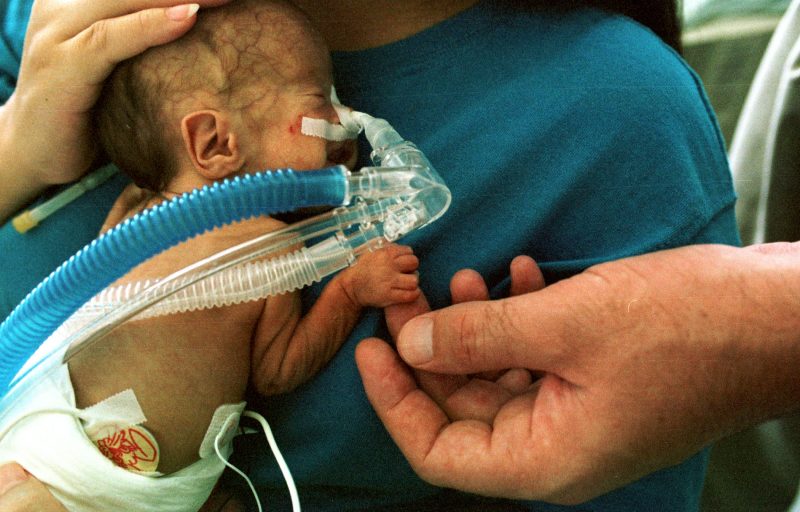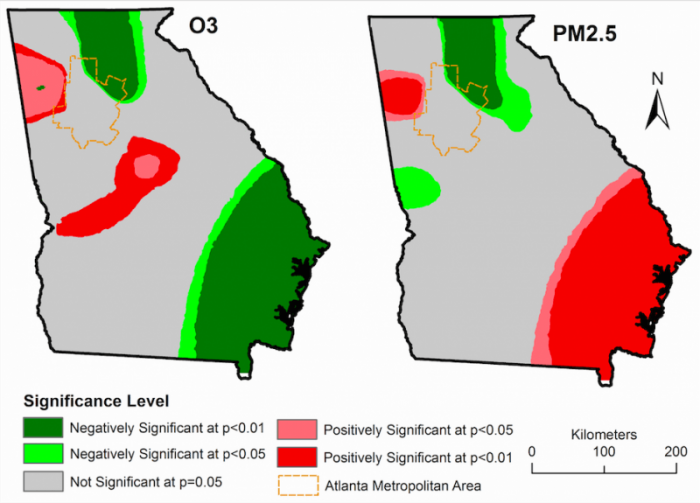
Preterm Birth (PTB), a human birth happening before 37 completed weeks of gestation, is a leading cause of infant mortality and morbidity. PTB babies tend to have a higher risk of death or serious health issues.
According to the United States Centers for Disease Control and Prevention (CDC), about 36% of infant deaths in 2013 were caused by preterm-related issues, and the PTB babies who survived may have developmental delays, feeding difficulties, breathing problems, and other health issues. A study shows that PTB complications were responsible for 0.965 million (15%) of the 6.3 million children globally who died before reaching the age of five years old in 2013.
Scientists have studied the associations of PTB with various risk factors, including genetic, maternal illness (e.g. infection and inflammation), maternal socioeconomic and demographic (e.g. education, income, race, and age), maternal behavioral and lifestyle (e.g. smoking, drinking, and exercise), and environmental (e.g. air temperature, pollution) variables.
Preterm Birth and Ambient Air Pollution
Air pollution is one of the most frequently studied factors for PTB. A wide range of studies around the world have analyzed the associations of PTB with prenatal exposures to various air pollutants. The examined air pollutants included nitrogen dioxide (NO2), nitrogen oxides (NOx), carbon monoxide (CO), sulphur dioxide (SO2), ozone (O3), black carbon (BC), Total Suspended Particulates (TSP), and particulate matters (PM) with aerodynamic diameter smaller than 2.5 µm and 10 µm (PM2.5 and PM10).
An increasing number of studies suggested that PTB might be related to prenatal ambient air pollution exposures, but the findings were not consistent and the causal relationships have not been built. Some studies found that a higher risk of PTB was associated with higher concentrations of air pollutants, but some didn’t find significant relationships between them, and a few studies even identified a higher risk of PTB associated with lower prenatal exposures to air pollution. The comparison of previous studies indicates that the associations of PTB risk with prenatal pressures to air pollution actually change over space. An elevated PTB risk that is related to a higher concentration of an air pollutant in one location might be not significantly related to the air pollutant, or even associated with a lower concentration of the air pollutant, in another location.
The inconsistent results from different studies might be due to the differences in statistical methods and models, susceptible windows, air pollution exposure assessment, covariates selection, and underlying mechanisms. In addition, the spatially varying associations of PTB with air pollution might be also due to the spatial variation in the chemical compositions of air pollutants that are affected by the differences in social and natural environment, including pollution types and sources, pollution control policies and technologies, urbanization level, and climate. Furthermore, the individual-level and contextual community-level factors, including maternal demographics, lifestyle and behavioral factors, prenatal care, and neighborhood SES, which usually varies across places, may either modify exposures or interact with the effect of air pollution on pregnant women and subsequent birth outcomes (e.g. PTB), and so complicate the relationships between air pollution and birth outcomes.
Thus, we can reasonably hypothesize that the associations of PTB with ambient air pollution change continuously across space. However, no previously reported researches have explicitly analyzed this topic. The research design of previous studies assumed the association of PTB with an air pollutant is homogeneous within a country or a region in the study area, and no published research has reported how such associations might differ in different communities.
In order to fill this gap, we recently conducted research on 116,112 live and singleton births in the year 2000 in the state of Georgia from a geographic perspective. We used Geographically Weighted Logistic Regression (GWLR) to explore the associations of PTB with two ambient air pollutants, O3 and PM2.5, adjusted for nine individual-level birth and maternal demographic, socioeconomic, behavioral, and lifestyle factors, and three community socioeconomic status (SES) and urbanization variables. We also analyzed how the SES and urbanization level of the communities where the mothers lived during pregnancy affected the associations.
How Associations of Preterm Birth with Air Pollution Vary over Space
Our study revealed that significant positive, significant negative, and non-significant associations of PTB with both O3 and PM2.5 all exist in different areas of the state. A significant positive association of PTB with O3 (a higher risk of PTB is related to a higher concentration of O3) was concentrated in central Georgia and the northwestern area outside the Atlanta metropolitan area, containing only 10.1% of all births, while a large part of the state containing 65.9% of the births had no significant associations of PTB with O3, and a significant negative relationship (a higher risk of PTB is related to a lower concentration of O3) was found in the southeast and north-central areas of the state, containing 24.0% of the births (Figure 1).
Similar to its associations with O3, PTB had no significant associations with PM2.5 in most parts of the state that contain 69.1% of the births, significant negative associations with PM2.5 in 15.9% of the births, mostly located in north central and to a less extent, west-central Georgia, and significant positive associations in only 15.0% of the births, concentrated in the southeast Georgia and the northwestern Georgia just outside the Atlanta metropolitan area (Figure 1).

Figure Caption: Spatial Distribution in the Significance Level of the Associations of PTB with Air Pollutants. Note: The figure is Figure 3 in the original paper. Image published with permission from Elsevier from https://doi.org/10.1016/j.apgeog.2018.01.007
How the Community SES and Urbanization Level Affect the Associations
We also found the SES and urbanization level of the communities where mothers lived during pregnancy affected the associations of PTB with air pollutants. The significant positive associations of PTB with both O3 and PM2.5 mainly existed in the rural communities with low SES, where both air pollutants can be considered as significant risk factors, while the rural communities with high SES tended to have significant negative associations, and urban communities mostly had non-significant associations. The result indicates that the reduction of PTB through the pollution control on ozone and particulate matter might be more effective in rural communities with low SES, and it might not be effective in urban or rich rural communities.
In Closing
Our study suggests that the associations of PTB with air pollutants vary over space, and the spatially varying associations are affected by the SES and urbanization level of the communities where mothers resided during pregnancy. The main findings include: 1) significant positive, significant negative, and non-significant associations of PTB with both O3 and PM2.5 were all present in Georgia; 2) Both air pollutants were important PTB risk factors in only small parts of Georgia, particularly in rural communities with low SES; 3) PTB was not significantly related to either air pollutant in urban communities.
Our study made several novel contributions to studying the effect of ambient air pollution on PTB. First, to the best of our knowledge, this is the first study to explore how the associations of PTB with air pollution vary continuously over space, which can contribute to a better interpretation of the inconsistent results reported by various previous studies. Second, this is the first study to explore whether and how communities’ SES and urbanization levels modify the effect of PM2.5 and O3 on PTB. Third, this is the pilot study to apply GWLR in analyzing the associations of PTB with air pollution. The methodology can be adopted by health scientists to examine the associations of other health or birth outcomes with various risk factors. The findings can also provide useful information for local health policymakers to target the significant risk factors in the local communities.
The findings are described in the article titled How the Relationships between Preterm Birth and Ambient Air Pollution Vary over Space: a Case Study in Georgia, USA Using Geographically Weighted Logistic Regression, recently published in the journal Applied Geography. This work was conducted by Dr. Jun Tu from Kennesaw State University and Dr. Wei Tu from Georgia Southern University.









